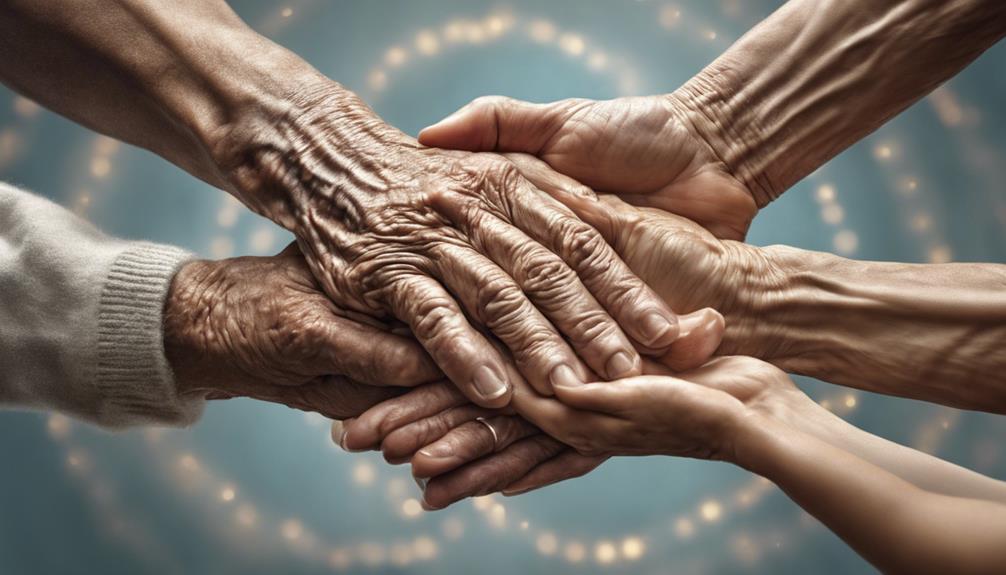To protect against elder abuse and neglect, it’s crucial to comprehend the risk factors, encourage social interactions, adequately train caregivers, establish clear reporting procedures, involve the community, support primary caregivers, educate older adults and the community, and establish a safe environment for elders. Early recognition of signs, transparent communication, and taking decisive action are key in safeguarding our seniors. Each of these steps is vital in maintaining the safety of older adults. Keep exploring for more effective strategies in preventing elder abuse and neglect. Furthermore, promoting a culture of respect and dignity for seniors can aid in preventing abuse in the elderly. Collaboration with local organizations and healthcare providers is essential to ensure sustainable and continuously improved preventive measures. Together, through collective efforts, we can make lasting changes that enhance the protection and support for our aging population.
Key Takeaways
- Implement clear reporting procedures for suspected abuse.
- Provide training for caregivers on abuse prevention.
- Promote social interactions to reduce abuse risk.
- Educate older adults and communities on abuse signs.
- Support caregivers to reduce stress and prevent neglect.
Risk Factors for Elder Abuse
Identifying risk factors for elder abuse is essential in developing effective prevention strategies. In institutional settings, where elders receive care, several factors can increase the likelihood of abuse. Neglectful hiring practices, such as inadequate background checks or training, can lead to elder abuse. High staff turnover rates contribute to inconsistency in care, potentially putting elders at risk. Negative staff attitudes towards residents create a hostile environment that may result in abuse or neglect.
Caregiver stress is another significant risk factor for elder abuse. Caregivers who lack proper coping skills, suffer from mental illness, or struggle with substance abuse are more likely to perpetrate abuse. High-stress situations, such as overwhelming responsibilities or financial difficulties, can also increase the chances of abuse occurring. Additionally, limited access to elder care services can further exacerbate caregiver stress, making it important to provide adequate support and resources for caregivers to prevent abuse.
Importance of Social Interactions
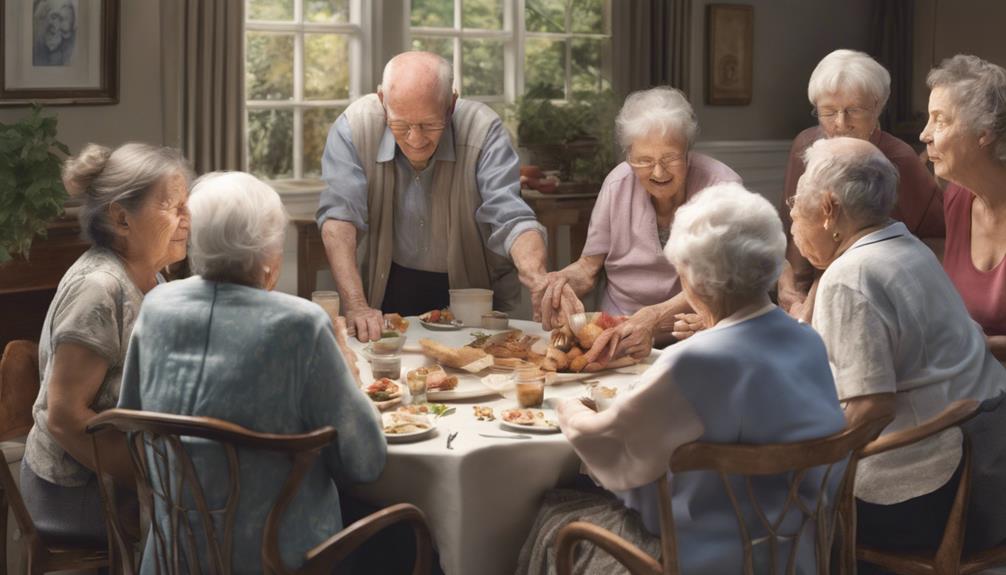
Regular social interactions play a crucial role in enhancing the well-being and resilience of older adults. Engaging in social activities can greatly reduce the risk of elder abuse by providing emotional support and companionship. Seniors who participate in social interactions tend to have better mental health outcomes and are less likely to experience feelings of loneliness or isolation.
Community involvement and maintaining social connections can create a protective network for older adults, decreasing their vulnerability to abuse. Moreover, these interactions promote cognitive stimulation and overall well-being in seniors, ultimately improving their quality of life and resilience.
Training for Caregivers
Caregiver training is vital for enhancing our abilities to provide proper care for older adults.
By participating in training programs, we can learn effective communication strategies and stress management techniques that help prevent elder abuse.
Studies have shown that caregivers who receive ongoing training are less likely to engage in abusive behaviors towards seniors.
Caregiver Education Importance
Enhancing the knowledge and skills of those providing care to seniors can greatly reduce the risk of elder abuse and neglect. Caregiver education plays a vital role in preventing neglect and ensuring the well-being of older adults.
When caregivers are properly trained, they develop a deeper understanding of the specific needs of seniors and learn effective strategies to address challenging behaviors. Trained caregivers are more adept at recognizing signs of abuse, intervening in a timely manner, and providing the necessary care with compassion and professionalism.
Research indicates that caregivers with proper education have lower rates of elder abuse incidents, leading to better outcomes for seniors. Continuous education on communication, stress management, and elder care practices is essential for maintaining high-quality care and preventing mistreatment.
Ongoing Training Opportunities
By staying updated on ongoing training opportunities, caregivers can continually improve their skills in recognizing and preventing elder abuse, ultimately enhancing the quality of care provided to seniors. Regular training programs offer valuable insights into best practices for elder care, equipping caregivers with the knowledge needed to identify signs of abuse and neglect.
This continuous education not only benefits the caregivers but also leads to better outcomes for the older adults under their care. Access to ongoing training empowers caregivers to deliver high-quality and compassionate assistance to seniors, creating a safer and more supportive environment for those in need.
Clear Reporting Procedures
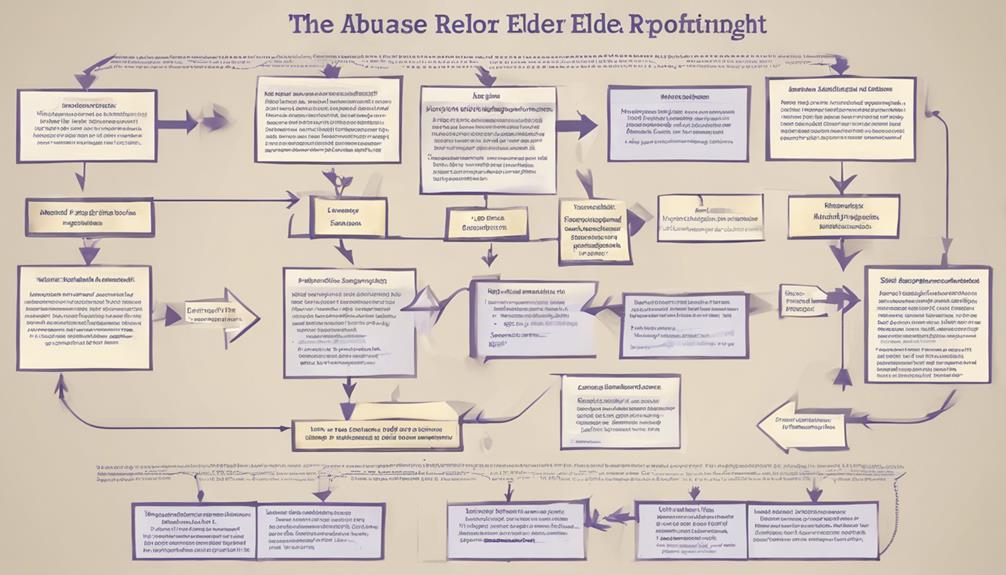
Establishing clear reporting procedures is vital in promptly addressing cases of elder abuse and senior neglect. When reporting protocols are in place, incidents can be documented and investigated effectively, ensuring the protection of older adults.
These reporting channels not only help in collaboration between authorities, caregivers, and support services but also contribute to accountability and the prevention of recurring instances of elder abuse. Transparency in reporting processes is key as it enables swift intervention and support for victims.
By having clarity in reporting procedures, we can act decisively to address elder abuse and neglect, providing the necessary assistance and protection to those affected. Remember, reporting any suspicions or concerns is essential in safeguarding the well-being of our seniors.
Together, we can create a safe environment for older adults by following these reporting protocols diligently and advocating for transparency in all aspects of elder care.
Promoting Community Engagement
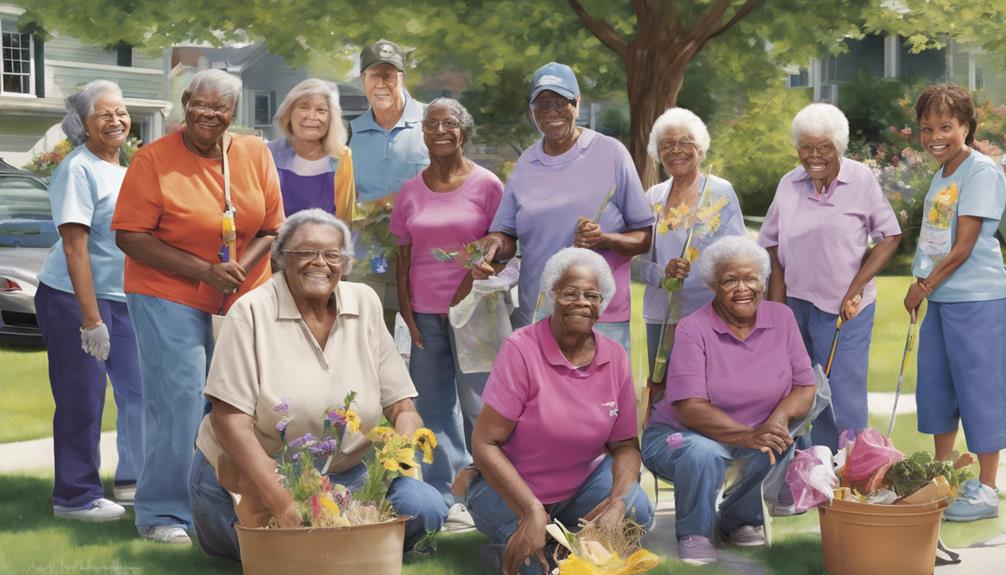
When we talk about promoting community engagement in preventing elder abuse, we focus on building trust through engagement, encouraging communication within the community, and fostering supportive relationships.
These actions help create a sense of belonging and safety for older adults, reducing the risk of abuse and neglect.
Building Trust Through Engagement
Engaging older adults in community activities enhances their well-being and reduces the risk of abuse and neglect by fostering social connections and support networks. Community engagement plays an essential role in preventing elder abuse by providing opportunities for older individuals to interact with others, build relationships, and feel a sense of belonging.
Through participation in senior centers and intergenerational programs, trust is cultivated, creating a safe space for older adults to share their concerns and seek help if needed. By building trust through engagement, older adults are empowered to recognize mistreatment and take steps to address it.
This collaborative approach strengthens resilience and equips older individuals with the tools to safeguard themselves against abuse and neglect.
Encouraging Communication Within Community
Encouraging open communication within communities is vital for promoting community engagement and preventing elder abuse. By fostering an environment where individuals can freely communicate concerns, ideas, and support, we create a strong network that acts as a safeguard against mistreatment of older adults.
When community members actively communicate with one another, they become more aware of the signs of elder abuse and neglect. This increased awareness allows for quicker intervention and prevention strategies to be implemented.
Additionally, regular communication within the community guarantees that seniors aren't isolated and have the necessary support systems in place. Through effective communication, we can work together to prevent elder abuse and create a safe, supportive environment for all community members.
Fostering Supportive Relationships
To cultivate a supportive environment that fosters strong relationships within the community, we prioritize promoting active engagement among seniors. Community engagement plays an essential role in reducing social isolation among older adults, which, in turn, decreases their vulnerability to abuse.
When seniors participate in community activities, they often experience higher levels of emotional support, lowering the likelihood of neglect. Supportive relationships within the community act as a safety net for older adults, helping prevent instances of elder abuse.
Supporting Primary Caregivers
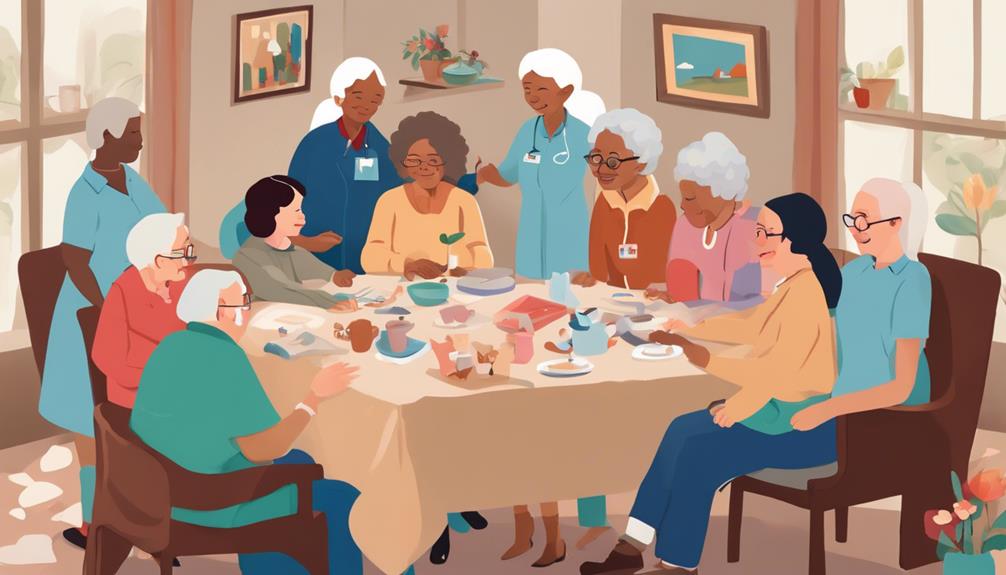
Primary caregivers play an essential role in the well-being of elderly individuals but often experience significant levels of stress and strain. Caregiver stress can lead to negative health outcomes, such as depression and anxiety. Studies show that 40-70% of caregivers exhibit these symptoms.
To support caregivers, it's important to provide respite care. Respite care allows caregivers to take a break from their responsibilities, reducing stress levels and improving their overall well-being.
Supporting caregivers is vital as they provide an estimated $470 billion worth of unpaid care annually in the United States. Many caregivers also face financial strain, with 1 in 5 reporting high levels of financial hardship due to their caregiving responsibilities.
Educating Older Adults and Community

As we focus on empowering older adults and the community, educating them on recognizing signs of abuse becomes a key step in promoting their safety and well-being. By providing older adults with information on what constitutes abuse, such as physical harm, emotional distress, or financial exploitation, they can better protect themselves. Community education plays an essential role in raising awareness about elder abuse and encouraging individuals to report any suspicious behaviors they may witness.
Prevention strategies, including establishing safe environments and building support networks, are crucial components of educating both older adults and the community. These strategies can help prevent abuse before it occurs and create a culture of vigilance and care. Training community members to identify warning signs of elder abuse enables early intervention and protection of vulnerable seniors. Collaborating with local organizations and senior centers further enhances ongoing education and support for preventing elder abuse within the community.
Together, we can work towards ensuring the safety and well-being of older adults through education and awareness.
Creating a Supportive Environment

Establishing a nurturing environment within communities is essential in safeguarding older adults against abuse and neglect. By implementing community support services, we can reduce the risk of elder mistreatment.
Increasing funding for training in aging-related care is vital as it enhances awareness and prevention efforts. Empowering older adults through senior centers and intergenerational programs promotes social engagement and support, creating a sense of belonging and security.
Recognizing and understanding the warning signs of abuse is paramount for early intervention and prevention. It's important to promptly report any suspected elder abuse to local authorities to guarantee the protection of vulnerable older adults from harm.
Frequently Asked Questions
How Can Elder Abuse Be Prevented in the Community?
To prevent elder abuse in the community, we can implement community supports, increase funding for training, empower older people through programs, recognize warning signs, and report promptly to authorities. Together, we can protect our seniors.
Which of the Following Are Steps That Can Prevent Elder Abuse or Neglect?
Recognize warning signs, provide support, and report promptly. Educate caregivers, empower seniors, and fund training. These steps prevent abuse and neglect. We must act together to guarantee the safety and well-being of older adults. Building a compassionate community starts with understanding the challenges of caring for aging parents and addressing their unique needs with empathy. By fostering open communication and prioritizing respect, we can create environments where seniors feel valued and protected. Together, these efforts help ensure dignity and quality of life for all older adults.
What to Do if an Elderly Person Can T Take Care of Themselves?
When an elderly person can't care for themselves, we act swiftly. Signs like poor hygiene or unpaid bills push us to connect with Adult Protective Services. We provide resources and guarantee a safe living environment for them.
What Is the First Step in Preventing Elder Abuse?
Recognizing warning signs, understanding risk factors, promoting social engagement, supporting caregivers, and implementing clear reporting procedures are essential in preventing elder abuse. By taking these steps, we can safeguard older adults and guarantee their well-being.
Conclusion
To sum up, preventing elder abuse and senior neglect requires a collaborative effort from caregivers, communities, and older adults themselves. By recognizing the risk factors, promoting social interactions, providing training, establishing clear reporting procedures, engaging with the community, supporting primary caregivers, educating everyone involved, and creating a supportive environment, we can work together to guarantee the safety and well-being of our senior population.
For example, by offering support groups for caregivers, we can help prevent burnout and reduce the risk of abuse.
